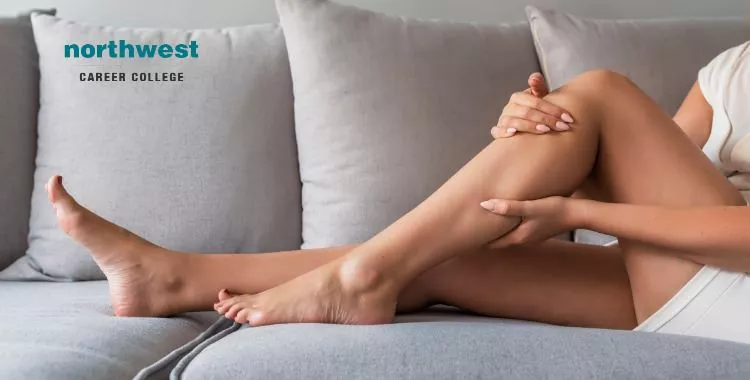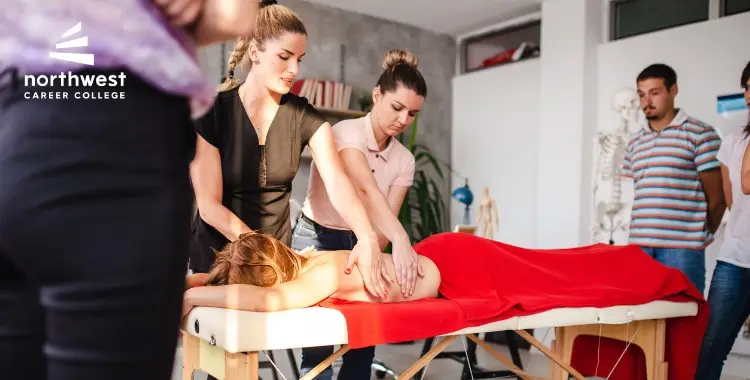Why Do My Muscles Feel Tight?
- Massage Therapy
- March 11, 2024
- 3.7k views
- 5 min read

If you say you feel “tight” in a particular area, that might mean several different things. You might have a poor range of motion or maybe your range of motion is fine, but the movement to the end range feels uncomfortable or takes excess effort.
Or maybe the problem isn’t really with movement, but just that the area never reels feels relaxed. Or maybe the area feels basically relaxed but has some vague sense of discomfort, a feeling that is unpleasant but too mild to be called pain.
This ambiguity means that the feeling of tightness is just that – a feeling – which is not the same thing as the physical or mechanical property of excess tension, or stiffness, or shortness. You can have one without the other.
Table of Contents
Why Do Muscles Feel Tight If They Are Not Actually Tight?
So why would a muscle feel tight even if it physically loose?
I think we can use pain as an analogy. Pain can exist even in the absence of tissue damage, because pain results from the perception of threat, and perception does not always match reality. Pain is essentially an alarm, and alarms sometimes go off even when there is no real danger.
So tension is not a threat, but the absence of adequate rest or blood flow is a threat, which could cause metabolic stress and activate chemical nociceptors. So the problem that a feeling of tightness is trying to warn us about is not the existence of tension, but the frequency of tension or the lack of blood flow (especially to nerves, which are very bloodthirsty.)
How Can You Cure Muscle Tightness?
I think we can probably treat the feeling of tightness in the same way we treat pain – by changing one of the many “inputs” that cause the nervous system to perceive threat in the body, such as nociception, thoughts, emotions, memories, etc.
In most simple cases of feeling tight, the cause is obvious – we have been stuck in the same posture or movement pattern for too long, and our muscles need a rest or change of position to reduce the ischemia or metabolic stress that is causing nociception in certain areas. For example, if we spend hours in a car, or an airplane, or behind a computer, we will instinctively feel compelled to stretch and move, and this will usually alleviate any feelings of stiffness.
The driver of the discomfort may have more to do with the nervous system becoming either peripherally or centrally sensitized to the need for more blood flow in certain areas. This could happen through local inflammation, adrenosenstivity, increased sensitivity at the dorsal horn, or maybe even learned associations between certain environments and certain sensations.
So How Do We Reduce This Sensitivity?
There isn’t an easy answer to this question, because if there was, it would solve the problem of chronic pain, and no one is figured out how to do that yet. But if I’m right that the feeling of tightness is a mild form of pain, then it should at least be easier to deal with.
Below is a list of several methods people often use to address a chronic feeling of tightness, along with some thoughts about each strategy from the above perspective. You’ll notice that some of the recommendations run exactly opposite to what people often do.
Stretching
We instinctively stretch muscles that have remained in a short position for a while, and this usually makes us feel immediately better.
But, as noted above, most people who suffer from chronic tightness have already tried and failed at this strategy, which suggests the issue is less about bad mechanics and more about increased sensitivity.
Motor control for Muscle Tightness
Many forms of movement therapy are essentially motor control approaches – they seek to change movement, postural and breathing habits so they are more efficient, eliminate parasitic tension, develop the skill of relaxation, etc.
Habits are hard to break, but this strategy is worth a shot, especially in cases where tightness seems related to certain postures or movements. Of course, where the situation is more complex, motor control shouldn’t be expected to fix the problem on its own.
Exercise and Resistance Training
People tend to associate strength training with becoming tighter. During exercise, muscles, of course, become very tense, and they may feel stiff the next day because of delayed onset muscle soreness. There is also the (false) idea that strength training makes muscles shorter and less flexible.
Join One Of The Best Massage Therapy Schools In Las Vegas Today!
At Northwest Career College, we operate one of the best Massage Therapy Schools in Las Vegas and our Massage Therapy Course will teach you the skills you’ll need to apply the benefits of sports massage. The benefits of massage therapy are widely recognized with employment for massage therapists expected to increase by 22% between 2014-2024, with an average massage therapist earning $39,360 a year. Additionally, many massage therapists maintain active, private practices, increasing both their flexibility and earnings.
Our massage student clinic is open seven days a week, for both your and your clients’ convenience, and we offer day and night classes to accommodate your work and family schedules. Our instructors are experienced professionals who will prepare you to sit for either the NCBTMB (National Certification Board of Therapeutic Massage) or the MBLEX (Federation of State Massage Therapy Boards) exams and we are proud of our 100% board pass rate. Call us at (702) 403-1592 to speak to one of our enrollment specialists today!



